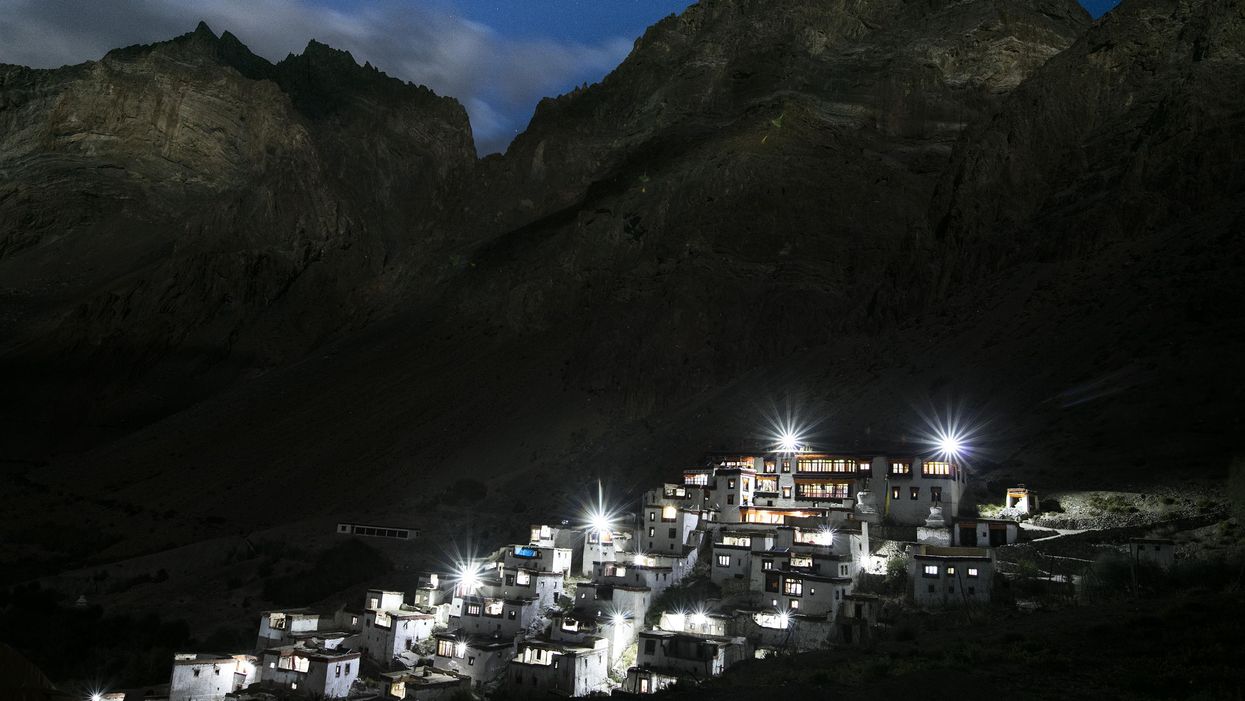How 14 Microgrids Set Off a Chain Reaction in a Himalayan Village

Five years ago, the remote village of Lingshed in the Ladakh region of the northern Himalayas finally got electricity. A team of IEEE volunteers installed 14 solar-powered microgrids at the monastery and a nearby elementary school. The effort was led by IEEE Smart Village, a program that brings electricity-as well as educational and employment opportunities-to remote communities worldwide. The program is one of the donor-supported priority initiatives of the IEEE Foundation.
The Lingshed project was done in collaboration with the Global Himalayan Expedition, an organization that couples tourism with technology to deliver solar energy to remote communities.
In July GHE founder Paras Loomba returned to Lingshed at the request of IEEE Smart Village to learn what kind of impact the microgrids have had on the community. He found that the IEEE project has helped the villagers improve their living conditions with modern conveniences and inspired the construction of a new 100-kilometer-long road to make it easier to travel between Lingshed and Leh, the largest city in the area. It is hoped that the route, which is still in progress, also will increase tourism in the area.
The road replaces a gravel trail that could be traversed only by foot, with donkeys carrying any luggage or packages. The new road is expected to transform a two-day walk to a six-hour drive by car.
ELECTRICITY FOR THE HIMALAYAS
To bring electricity to Lingshed, the IEEE group installed 14 solar microgrids, each powering a string of LEDs in homes and along the streets. The grids were divided among the village's monastery, dormitories at the elementary school, and a small computer lab built by GHE that doubles as an Internet cafe for travelers. The lab has a satellite Internet link and "offline Internet," a collection of encyclopedias on a hard drive that students can use for school. Each microgrid includes a 250-watt photovoltaic panel, a pair of 12-volt lead-acid deep-discharge tubular batteries designed for solar systems, and about 30 3-W LEDs, according to Jean Kumagi's article in IEEE Spectrum about the expedition, in which she gave her first-hand account.
Before the 2016 electrification project, the monks and the temple's acolytes conducted pujas-Buddhist prayer ceremonies-in the dark or with little light at dawn and dusk, Sonam Dorje, Linghsed's mayor, told Loomba in a recent interview. The monks were dependent on kerosene lamps, not only for light but also to heat the monastery. Now, thanks to the microgrids, the room where they conduct the prayer ceremonies has light. Students can now study at night, and the satellite Internet link, which was active until 2019 when the services stopped, allowed students to stay up to date on news. The local government installed a mobile tower this year-which has enabled the village to have cellular service and Internet access.
 Monks using the lights inside the Lingshed Monastery's main prayer room where monks conduct pujas.Sonam Dorje
Monks using the lights inside the Lingshed Monastery's main prayer room where monks conduct pujas.Sonam Dorje
After IEEE Smart Village and GHE engineers installed the microgrids, Loomba says, the villagers approached another organization and asked it to install more of them.
Some villagers now use space heaters during the winter at home instead of kerosene lamps. Some even purchased televisions.
The mayor told Loomba that the villagers now want to focus on motivating their children to pursue higher education.
THE ROAD TO CONNECTIVITY
Traveling from Leh to Lingshed was quite a feat before construction of the road began in 2017.
Kumagi described the trek in her 2016 Spectrum article. The team traveled the first leg of the trip to Lingshed in an SUV. "The two-lane road heading out of town is winding but relatively smooth," Kumagi wrote. "Once the pavement runs out at the village of Wanla, the hairpin turns become more frequent, and the pace slows down considerably."
Unable to drive the rest of the way, the team loaded its luggage onto donkeys. The engineers trekked alongside them. They traveled through two mountain passes up to the village. That section of the journey alone took nearly 10 hours.
The new road was built by the Border Roads Organisation, a construction program run by the Indian Armed Forces.
The unpaved, single-lane route allows for four-wheel drive Jeeps to travel through the mountain pass, but it's not wide enough to accommodate vans or buses.


Global Himalayan Expedition
Thanks to the road, "it became easier for the people to transport materials and medical supplies," Dorje says. People now can be transferred to the hospital if they need urgent medical attention.
Because of heavy snowfall in the winter, the route is open only from June to October. The road must be regraded every spring-which provides villagers with jobs and a steady income, Loomba says.
The road will help attract tourists to the area and increase local businesses' revenue, he told The Institute. The route is currently being extended to reach Zanskar Valley, an up-and-coming tourist destination, he says. The valley is 40 km from Lingshed and is known for its scenic landscape. It usually takes four days for travelers to reach it from Lingshed, and they have to walk across the frozen Zanskar River-which can be dangerous, Loomba says. Thanks to the road, the trip from Lingshed to the valley will take about 10 hours, he says.
Loomba says he never could have foreseen how big of an impact electrification would have on Lingshed.
"Sometimes when you [take part in] a project, you don't [envision] how [the community] will evolve," he says.
IEEE Smart Village is an IEEE Foundation supported program. Learn more about how you can support it on the IEEE Foundation website.